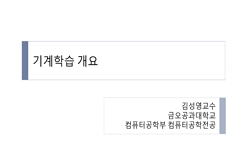본 연구에서는 기업의 재무제표를 활용하여 신용등급을 예측하기 위해 기계학습 기법들을 활용한다. 특성은 회사의 규모, 총부채 레버리지, 시장-장부가 비율, 영업이익률, 배당금 지급 여...
http://chineseinput.net/에서 pinyin(병음)방식으로 중국어를 변환할 수 있습니다.
변환된 중국어를 복사하여 사용하시면 됩니다.
- 中文 을 입력하시려면 zhongwen을 입력하시고 space를누르시면됩니다.
- 北京 을 입력하시려면 beijing을 입력하시고 space를 누르시면 됩니다.
https://www.riss.kr/link?id=A109261648
- 저자
- 발행기관
- 학술지명
- 권호사항
-
발행연도
2024
-
작성언어
Korean
-
주제어
CART ; credit ratings ; decision tree ; financial statements ; machine learning ; 결정트리 ; 기계학습 ; 신용등급 ; 재무제표 ; CART
-
등재정보
KCI우수등재
-
자료형태
학술저널
- 발행기관 URL
-
수록면
585-596(12쪽)
- 제공처
-
0
상세조회 -
0
다운로드
부가정보
국문 초록 (Abstract)
본 연구에서는 기업의 재무제표를 활용하여 신용등급을 예측하기 위해 기계학습 기법들을 활용한다. 특성은 회사의 규모, 총부채 레버리지, 시장-장부가 비율, 영업이익률, 배당금 지급 여부 다섯 가지를 사용하였고 AAA 등급부터 D 등급까지 21개의 등급으로 숫자로 환산하여 classificatioin and regression trees, support vector regression, multiple linear regression 모델을 활용하여 예측하였다. 신용등급예측에 대한 실험결과는 모든 변수를 포함한 모델이 $R^2$값 및 MSE에서 가장 뛰어났으나, 시가총액, 총부채 레버리지, 시장-장부가 비율 세 가지 변수의 모델은 가장 뛰어난 모델의 정확도에 근접하게 도달하였으며 단순성과 해석 가능성을 제공함으로 이 모델을 최종모델로 선정하였다. 해당 모델에 따르면 시가총액이 100억 원 이하, 500억 원 이하, 4.8조 원 이하일 때 평균적으로 B+, BBB, A+의 신용등급을 배정받는다. 신용등급을 향상하기 위해서는 시가총액을 높이는 방법과 부채 레버리지 비율을 낮추는 방법이 신용등급을 올리는 데 효과적이었다.
다국어 초록 (Multilingual Abstract)
This study utilizes machine learning techniques to predict the credit ratings of companies based on their financial statements. Five variables used in this study are Market capitalization, Total debt leverage, Market-to-book ratio, Operating margin, a...
This study utilizes machine learning techniques to predict the credit ratings of companies based on their financial statements. Five variables used in this study are Market capitalization, Total debt leverage, Market-to-book ratio, Operating margin, and Dividend payer. The target variable from AAA to D, encompassing 21 grades, were converted into numerical values. Prediction was conducted using Classification and Regression Trees, Support Vector Regression, and Multiple Linear Regression models. The experimental results showed that the model using all variables performed best in terms of both $R^2$ and MSE. The evaluation metrics of the model including only three variables(Market capitalization, Total debt leverage, Market-to-book ratio) closely approximated those of the best-performing model. The final model with three variables offers simplicity and ease of interpretation. When market capitalization was below 10 billion KRW, below 50 billion KRW, and below 4.8 trillion KRW, companies typically receive credit ratings of B+, BBB, and A+, respectively. To improve credit ratings, increasing market capitalization and reducing debt leverage were found to be effective strategies.
동일학술지(권/호) 다른 논문
-
- 한국데이터정보과학회
- 송지웅
- 2024
- KCI우수등재
-
- 한국데이터정보과학회
- Dan Huang
- 2024
- KCI우수등재
-
- 한국데이터정보과학회
- 최인영
- 2024
- KCI우수등재
-
- 한국데이터정보과학회
- 전희주
- 2024
- KCI우수등재





 DBpia
DBpia






